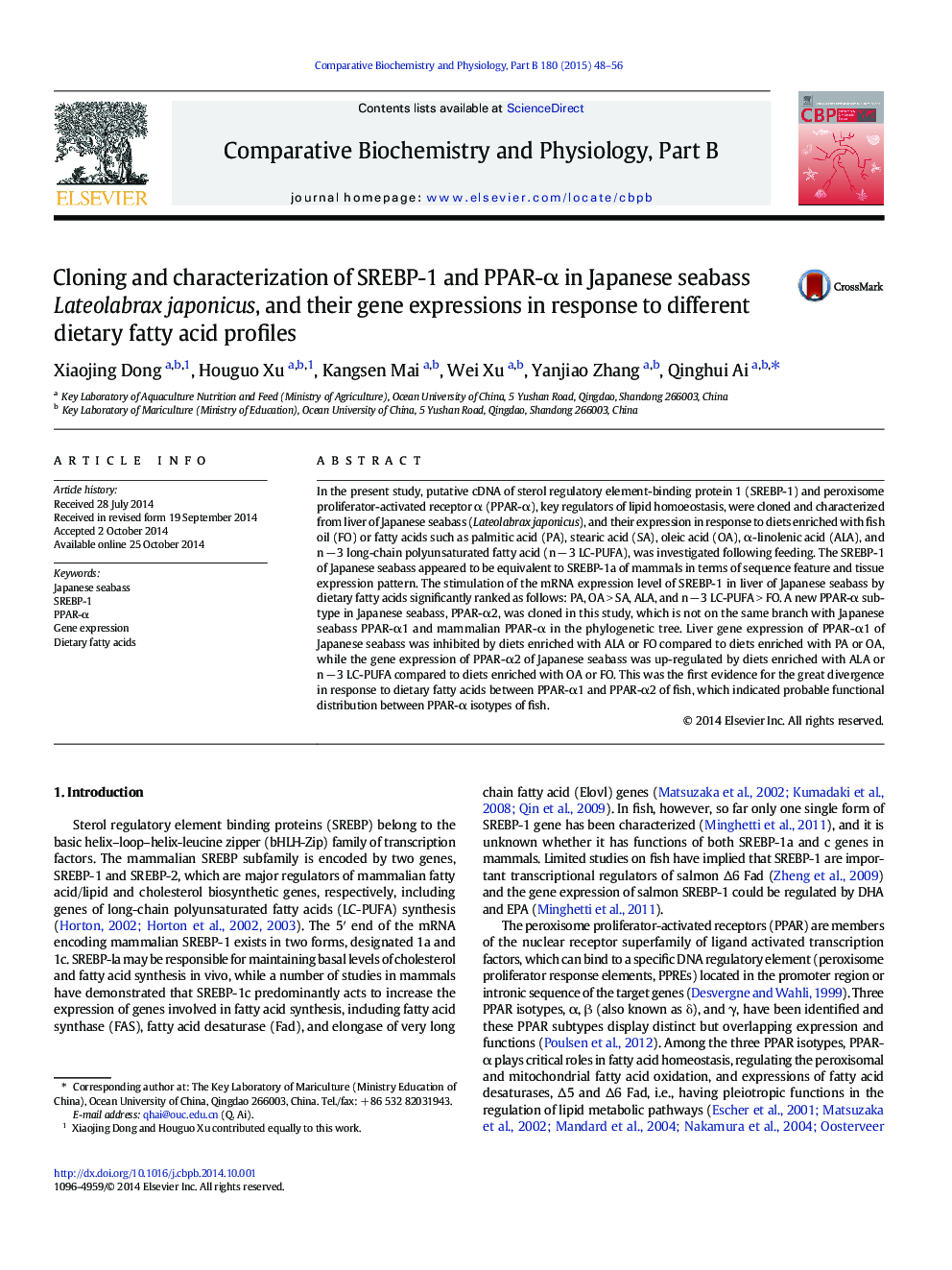| Article ID | Journal | Published Year | Pages | File Type |
|---|---|---|---|---|
| 8318883 | Comparative Biochemistry and Physiology Part B: Biochemistry and Molecular Biology | 2015 | 9 Pages |
Abstract
In the present study, putative cDNA of sterol regulatory element-binding protein 1 (SREBP-1) and peroxisome proliferator-activated receptor α (PPAR-α), key regulators of lipid homoeostasis, were cloned and characterized from liver of Japanese seabass (Lateolabrax japonicus), and their expression in response to diets enriched with fish oil (FO) or fatty acids such as palmitic acid (PA), stearic acid (SA), oleic acid (OA), α-linolenic acid (ALA), and n â 3 long-chain polyunsaturated fatty acid (n â 3 LC-PUFA), was investigated following feeding. The SREBP-1 of Japanese seabass appeared to be equivalent to SREBP-1a of mammals in terms of sequence feature and tissue expression pattern. The stimulation of the mRNA expression level of SREBP-1 in liver of Japanese seabass by dietary fatty acids significantly ranked as follows: PA, OA > SA, ALA, and n â 3 LC-PUFA > FO. A new PPAR-α subtype in Japanese seabass, PPAR-α2, was cloned in this study, which is not on the same branch with Japanese seabass PPAR-α1 and mammalian PPAR-α in the phylogenetic tree. Liver gene expression of PPAR-α1 of Japanese seabass was inhibited by diets enriched with ALA or FO compared to diets enriched with PA or OA, while the gene expression of PPAR-α2 of Japanese seabass was up-regulated by diets enriched with ALA or n â 3 LC-PUFA compared to diets enriched with OA or FO. This was the first evidence for the great divergence in response to dietary fatty acids between PPAR-α1 and PPAR-α2 of fish, which indicated probable functional distribution between PPAR-α isotypes of fish.
Related Topics
Life Sciences
Biochemistry, Genetics and Molecular Biology
Biochemistry
Authors
Xiaojing Dong, Houguo Xu, Kangsen Mai, Wei Xu, Yanjiao Zhang, Qinghui Ai,
